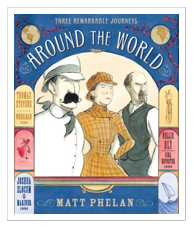
Age range: 8 and up
Interest range: 8 and up
Genre: Classic, Adventure, Family
Themes:
Survival, Courage and Bravery, Pirates, Colonization, Family, Adventure, Shipwreck and Family.
Plot:
Starting in the aftermath of a shipwreck, the Swiss family rebuilds their life on an uncharted tropical island. They use the wealth of salvage in livestock, tools, guns, furniture, wood, and more to build a safe home in the trees, complete with running water and other conveniences. The mother and father begin an idealic exhistance with their 3 boys aged 9, 16, and 18. But one day the older boys decide to take a canoe and survey the rest of the island. They stumble across pirates that are attacking the crew of a ship, and rescue the captain’s daughter, bringing the wrath of the pirates on them since they are discovered. Their defenses include pits with a tiger in one pit, rock piles, a log pile and coconut bombs (hollowed out coconuts filled with gunpowder with a fuse), all of which cause problems for the attacking pirates. They begin defending the fortress but are soon down to only a few shots with their muskets. At this critical moment, a ship appears on the horizon and fires its cannons at the pirates and their ship. The pirates retreat and make a desperate escape, and the family rejoices. Father, Mother and Francis choose to remain on the island while the Captain notes that Father will likely be recommended as Governor of the new colony.
Review:
The ultimate survival fantasy, The Swiss Family Robinson holds up pretty well considering its’ 50+ years. While the stereotypes of the pirates as savages with stilted hand movements (and brown face make-up) is ridiculous and the animal treatment is suspect (two great danes attacking the tiger looked pretty fearsome), the film has all the elements of a great adventure. Some of the best bits include (but are not limited to) rope swings, water slides, a pet elephant, a pet monkey, hammock beds, hand-hewn canoes, the aforementioned pirates, supportive parents, a giant tortoise shell sink, invented mechanical devices made with left over ship parts and coconut bombs. It couldn’t be more fun. The movie holds up after all these years and makes you wish there was a deserted island in your future.
Additional information:
The film was based on the book by Johann Wyss, written to preserve the tales he and his sons made up while imagining themselves in Robinson Crusoe’s predicament. Not originally intended for publication, the narrative was later edited and illustrated by Wyss’ descendants. Disney estimates they used about 10% of the original book.
At the box office, the film took roughly $40,000,000 (around $367,000,000 in today’s money), making it one of the most successful family films ever made.
A huge fan of the film, George Lucas named Anakin Skywalker after the director of this film, Ken Annakin.
Main character(s):
The Robinson Family made up of Father and Mother Robinson and their three sons–Frits, Ernst and Francis. They make the best of a bad situation and are resourceful and optimistic to a fault, with the exception of Mother, who does a of of praying to be rescued.
The Tree House is also a character of the film. Their multilevel tree house, built in record time, is complete with running water and a working pipe organ scavenged from the ship, while their grand yard is abloom in English roses.
Walt Disney Studios, 1960. 126 minutes, rated G.





 Age range: 10 and up
Age range: 10 and up


